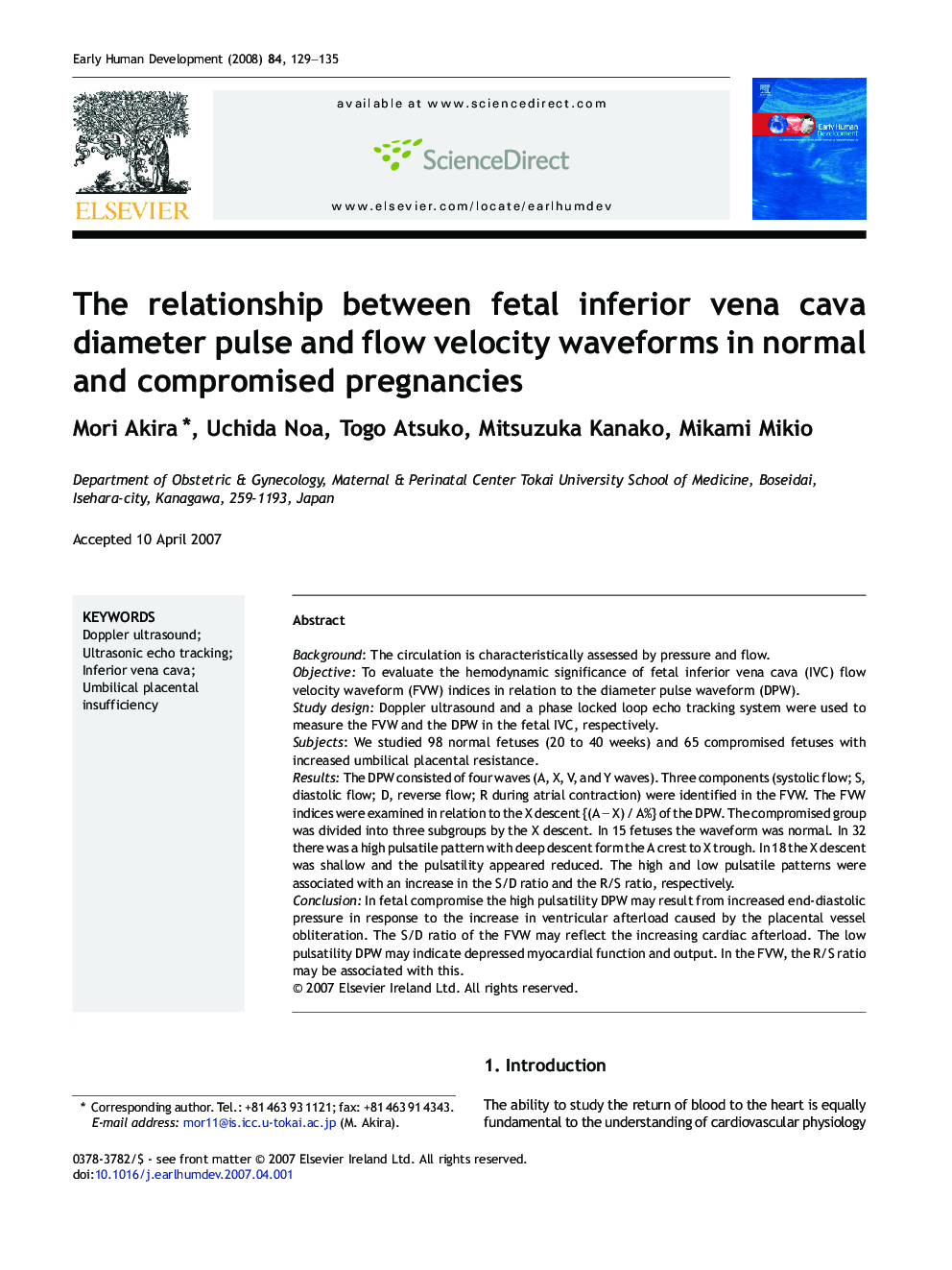| Article ID | Journal | Published Year | Pages | File Type |
|---|---|---|---|---|
| 3917667 | Early Human Development | 2008 | 7 Pages |
BackgroundThe circulation is characteristically assessed by pressure and flow.Objective:To evaluate the hemodynamic significance of fetal inferior vena cava (IVC) flow velocity waveform (FVW) indices in relation to the diameter pulse waveform (DPW).Study designDoppler ultrasound and a phase locked loop echo tracking system were used to measure the FVW and the DPW in the fetal IVC, respectively.SubjectsWe studied 98 normal fetuses (20 to 40 weeks) and 65 compromised fetuses with increased umbilical placental resistance.ResultsThe DPW consisted of four waves (A, X, V, and Y waves). Three components (systolic flow; S, diastolic flow; D, reverse flow; R during atrial contraction) were identified in the FVW. The FVW indices were examined in relation to the X descent {(A − X) / A%} of the DPW. The compromised group was divided into three subgroups by the X descent. In 15 fetuses the waveform was normal. In 32 there was a high pulsatile pattern with deep descent form the A crest to X trough. In 18 the X descent was shallow and the pulsatility appeared reduced. The high and low pulsatile patterns were associated with an increase in the S/D ratio and the R/S ratio, respectively.ConclusionIn fetal compromise the high pulsatility DPW may result from increased end-diastolic pressure in response to the increase in ventricular afterload caused by the placental vessel obliteration. The S/D ratio of the FVW may reflect the increasing cardiac afterload. The low pulsatility DPW may indicate depressed myocardial function and output. In the FVW, the R/S ratio may be associated with this.
